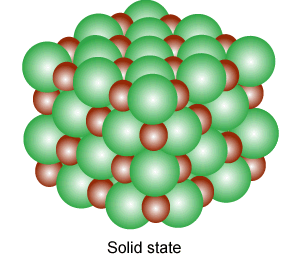How many number of atoms are there in a cube based unit cell, having one atom on each corner and two atoms on each body diagonal of cube?
How many number of atoms are there in a cube based unit cell, having one atom on each corner and two atoms on each body diagonal of cube?
- 4
- 8
- 9
- 6
The Correct Option is C
Approach Solution - 1
In a cube-based unit cell, there is one atom located at each corner and two atoms located on each body diagonal.
The number of corners in a cube is 8, and each corner is shared by 8 unit cells. Therefore, the contribution of atoms at the corners is:
8 corners * 1/8 atom per corner = 1 atom
The number of body diagonals in a cube is 4, and each body diagonal is shared by 2 unit cells. Therefore, the contribution of atoms on the body diagonals is:
4 body diagonals * 2 atoms per diagonal = 8 atoms
Adding the contributions from the corners and body diagonals, we get:
1 atom (corners) + 8 atoms (body diagonals) = 9 atoms
So, the correct answer is (C) 9.
Approach Solution -2
Atoms in a Cube-Based Unit Cell
Let's analyze the unit cell:
- 1 atom on each corner of the cube → Total corners = 8
- Each corner atom is shared by 8 unit cells → Contribution = \( \frac{1}{8} \times 8 = 1 \) atom
2 atoms on each body diagonal of the cube:
- Total number of body diagonals in a cube = 4
- 2 atoms per diagonal × 4 diagonals = 8 atoms
- Each of these atoms lies completely within the unit cell → Contribution = 8 atoms
Total atoms = 1 (from corners) + 8 (from body diagonals) = 9 atoms
Correct Answer: 9
Top Questions on The solid state
- A metal crystallizes in simple cubic lattice. The volume of one unit cell is \( 6.4 \times 10^{-7} \, \text{pm}^3 \). What is the radius of the metal atom in pm?
- AP EAPCET - 2025
- Chemistry
- The solid state
- A metal crystallises in two cubic phases, fcc and bcc with edge lengths 3.5 Å and 3 Å respectively. The ratio of densities of fcc and bcc is approximately
- TS EAMCET - 2025
- Chemistry
- The solid state
- How many kinds of Bravais lattice are possible in a crystal?
- Bihar Board XII - 2025
- Chemistry
- The solid state
- The percentage of free space in a body-centred cubic unit cell is
- Bihar Board XII - 2025
- Chemistry
- The solid state
- Which of the following is not a crystalline solid?
- Bihar Board XII - 2025
- Chemistry
- The solid state
Questions Asked in KCET exam
- If the number of terms in the binomial expansion of \((2x + 3)^n\) is 22, then the value of \(n\) is:
- KCET - 2025
- Binomial theorem
- A random experiment has five outcomes \(w_1, w_2, w_3, w_4, w_5\). The probabilities of the occurrence of the outcomes \(w_1, w_2, w_4, w_5\) are respectively \( \frac{1}{6}, a, b, \frac{1}{12} \) such that \(12a + 12b - 1 = 0\). Then the probabilities of occurrence of the outcome \(w_3\) is:
- KCET - 2025
- Probability
- If 'a' and 'b' are the order and degree respectively of the differentiable equation \[ \frac{d^2 y}{dx^2} + \left(\frac{dy}{dx}\right)^3 + x^4 = 0, \quad \text{then} \, a - b = \, \_ \_ \]
- KCET - 2025
- Differential equations
- Meera visits only one of the two temples A and B in her locality. Probability that she visits temple A is \( \frac{2}{5} \). If she visits temple A, the probability that she meets her friend is \( \frac{1}{3} \). The probability that she meets her friend, whereas it is \( \frac{2}{7} \) if she visits temple B. Meera met her friend at one of the two temples. The probability that she met her friend at temple B is:
- KCET - 2025
- Probability
In a practical examination, the following pedigree chart was given as a spotter for identification. The students identify the given pedigree chart as

- KCET - 2025
- Genetics
Concepts Used:
Solid State
Solids are substances that are featured by a definite shape, volume, and high density. In the solid-state, the composed particles are arranged in several manners. Solid-state, in simple terms, means "no moving parts." Thus solid-state electronic devices are the ones inclusive of solid components that don’t change their position. Solid is a state of matter where the composed particles are arranged close to each other. The composed particles can be either atoms, molecules, or ions.

Types of Solids:
Based on the nature of the order that is present in the arrangement of their constituent particles solids can be divided into two types;
- Amorphous solids behave the same as super cool liquids due to the arrangement of constituent particles in short-range order. They are isotropic and have a broad melting point (range is about greater than 5°C).
- Crystalline solids have a fixed shape and the constituent particles are arranged in a long-range order.